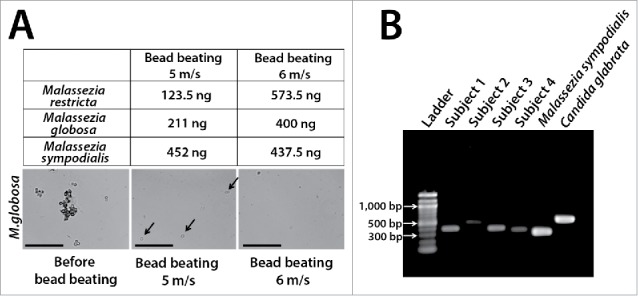Figure 3.

Examples of technical challenges important in the molecular evaluation of oral fungi. Table in Panel A shows yields after DNA extraction of standardized Malassezia cell suspensions (5 × 107 cells) using slightly different bead-beating speeds. DNA was extracted using yttria-zyrconia beads following a protocol developed by our group.5 Samples were subjected to bead-beating (3 × 30 sec) in an MP Biomedicals FastPrep™ instrument using a speed of 5 m/s or 6 m/s. Notice that this small variation almost doubled DNA recovery for M. restricta and M. globosa while it did not affect DNA yield for M. sympodialis. Arrows in middle phase-contrast micrograph show intact M. globosa cells after bead-beating using the 5 m/s setting. Scale bar = 50 μm. Panel B shows dramatic differences in amplicon length in the ITS1 region. Amplicons were generated from saliva samples of 4 subjects and from 2 reference strains using a published protocol.5 Such variation in amplicon length may introduce bias in abundance estimates as shorter fragments are preferentially sequenced.
